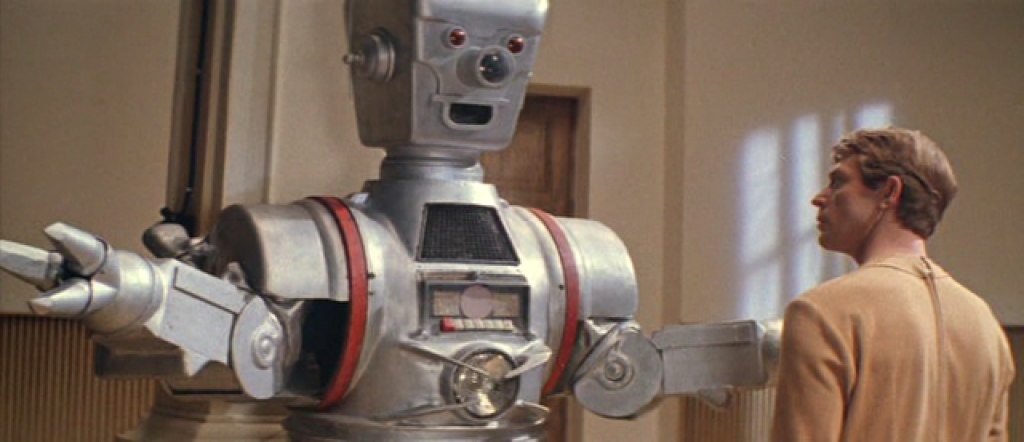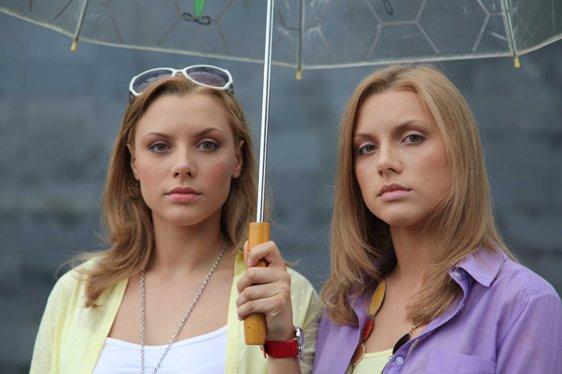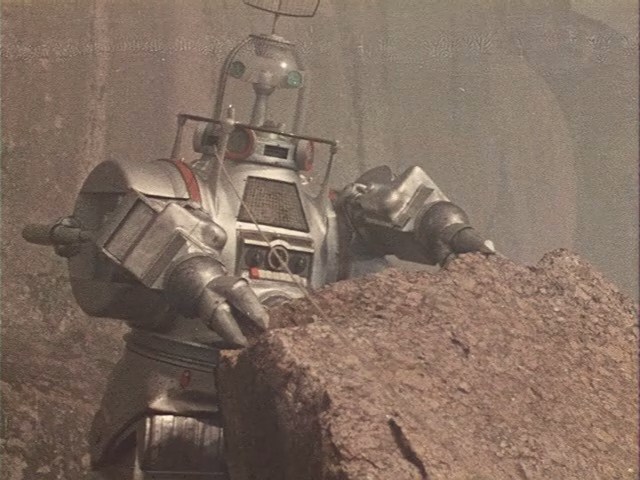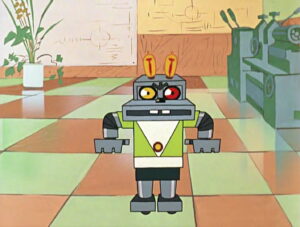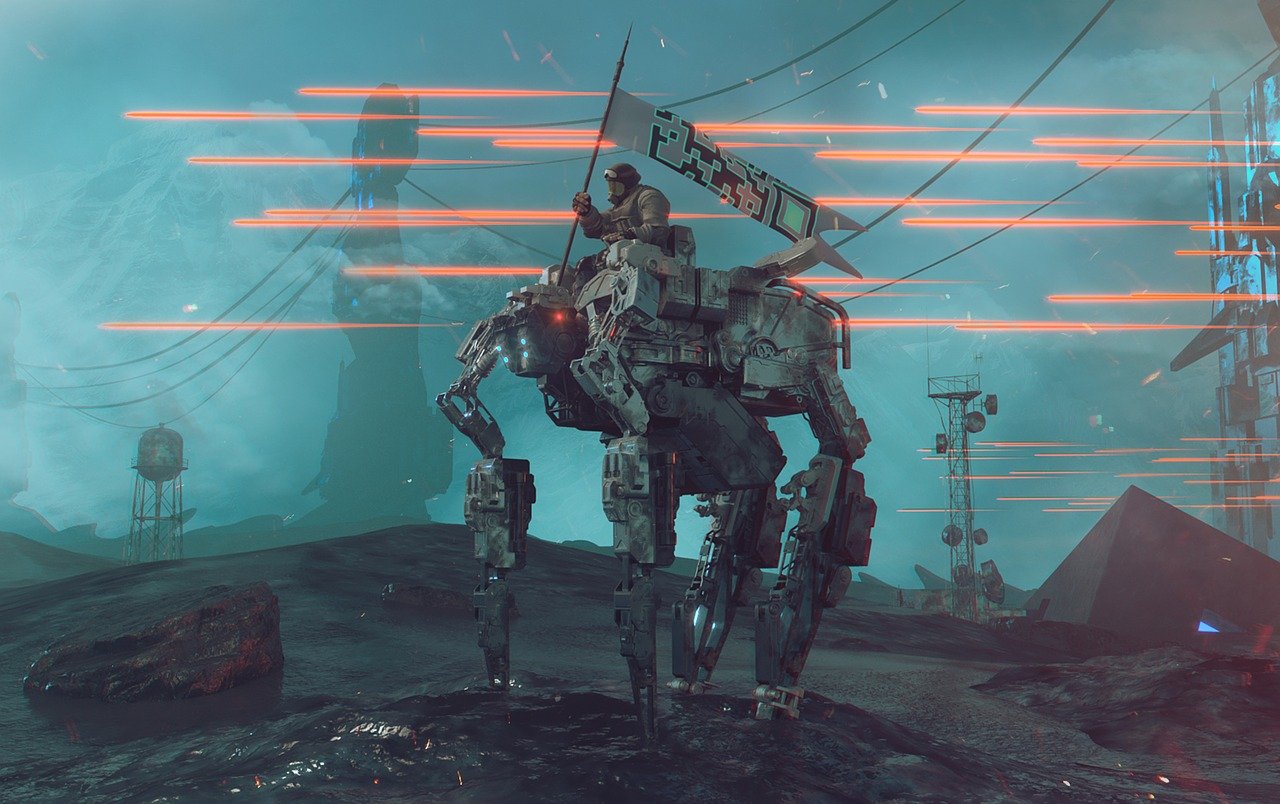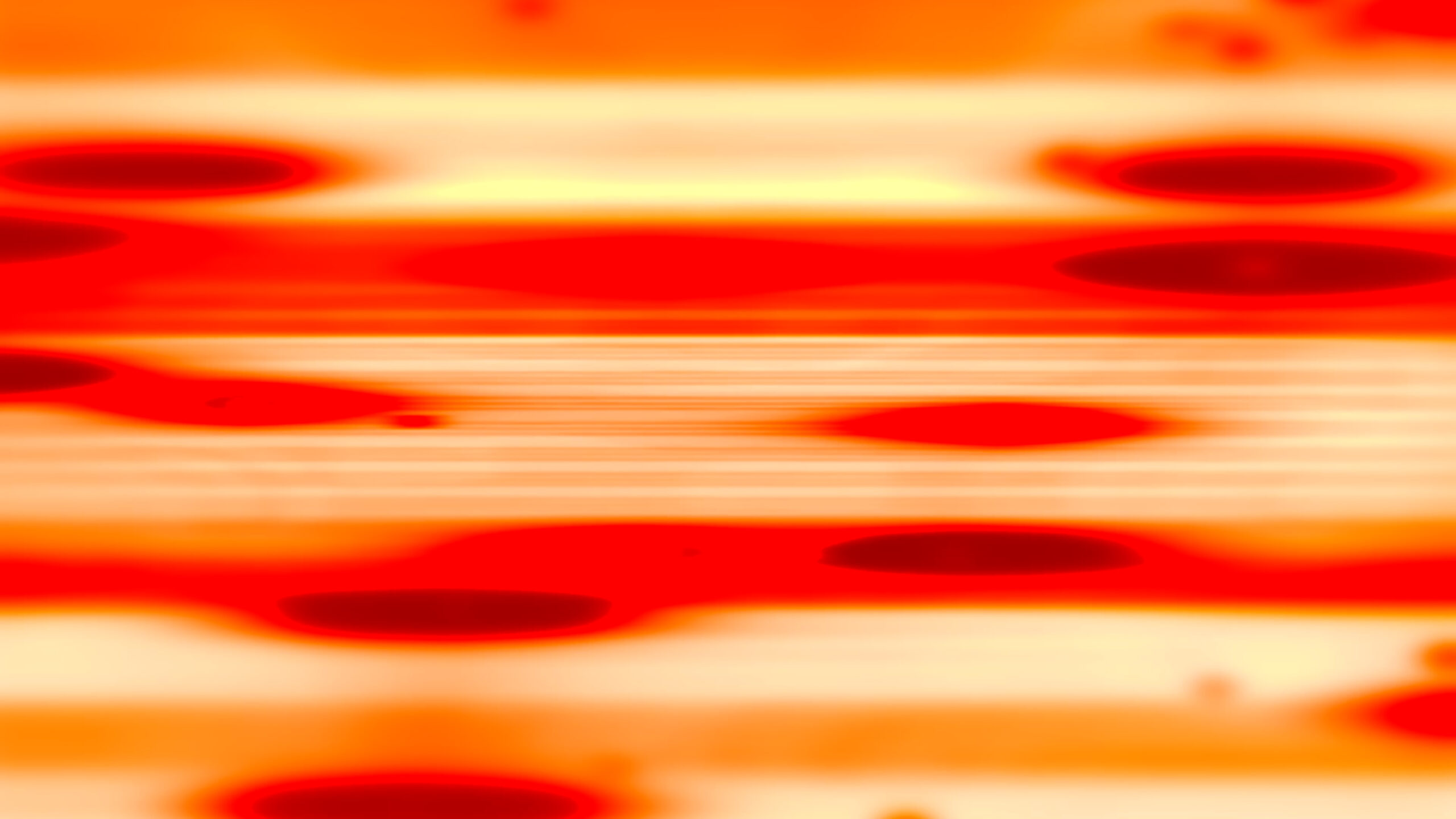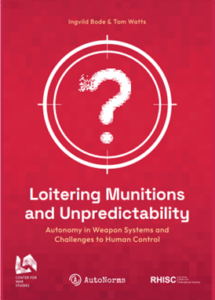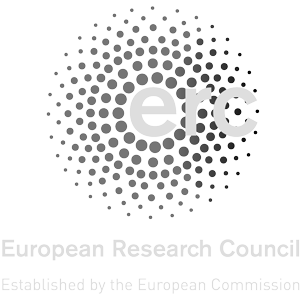The importance of studying depictions of artificial intelligence (AI) and its embodiment in popular culture has been demonstrated, notably by the Global AI Narratives (GAIN) project at the University of Cambridge. Examining the different AI narratives is key to understanding expectations and public perceptions of the risks and benefits of this technology as it is increasingly used in various domains. For example, the popular depiction of AI as a Pandora’s Box which, once created, can result in vengeful robots trying to destroy humanity, could encourage people to be more afraid of or skeptical towards applications of AI. As argued by the GAIN team, such perceptions, in turn, could influence the regulation of AI and possibly the emergence of international norms on its development.
As AI-based technologies have a global impact, it is also important to explore how they are portrayed in the popular imagination of different cultures. However, much of the literature on the depictions of AI in popular culture focuses on Western or English-language films (especially the “Terminator”), television series, and novels. To help broaden our understanding of different perspectives of AI, this article examines some of the narratives and representations of AI in popular culture in the Soviet Union and the Russian Federation.
As pointed out elsewhere, AI is a relatively recent term. To help get at the full picture about the various narratives it has produced, it is useful to consider different ways in which intelligence is attributed to a machine. As demonstrated in this review, robots and androids are by far the most common depiction of AI in Soviet and Russian culture.
This article includes some of the most well-known depictions of AI in Russian popular culture measured against the author’s knowledge, resources such as Kinopoisk (the Russian equivalent of IMDB), and literature on Soviet science-fiction cinema. It highlights some of the main themes in how AI has been presented in Russian films, theatre, television, literature, and music. Starting with revolutionary robots, this article then explores five major themes: anthropomorphic depictions of AI, positive depictions of AI, negative depictions of AI, the ‘gendered’ depiction of AI, and depictions of human-AI relationships. It concludes with a series of brief reflections on whether these depictions vary considerably from the ones found in Western popular culture.
Revolutionary robots
The term “robot” is of Slavic origin and was coined in 1920 by Czech playwright Karel Čapek in his piece “R.U.R. (Rossum’s Universal Robots)”. It comes from the Czech word robota, meaning forced labour or serfdom. In Russian, the word rabota means work.
Čapek’s play, where robots revolt against their human creators, made it onto Soviet theatre scenes, while also inspiring adaptations with a political message. Writer Alexey Tolstoy, for instance, composed “The Rise of the Machines” in 1924, describing it as a version of “R.U.R” made for the Russian theatre scene. In Tolstoy’s play, an imperialist producer makes so-called artificial workers on a tropical island in the Pacific Ocean. However, these robots eventually learn about the principles of the communist revolution and decide to rise against the capitalist class.
One of the first cinematic depictions of robots are found in the movie “Loss of Sensation” (1935), also said to be inspired by “R.U.R”. The film portrays a capitalist country where the bourgeois class wants to replace workers with robots because they are more efficient. When the proletariat revolts, robots are directed by the factory owners to suppress the strike, but one worker ends up cracking the robots’ code and eventually takes over them – an early depiction of hacking. It is also suggested that the movie was based on a novel by Ukrainian writer Volodymyr Vladko, “The Robots Are Coming” (1929), in which robots also engage in class conflict, first on the bourgeoisie side, and then on the workers’ side.
Not all robots were political, however. In the short story “Sesame, Open!”, written by famous science fiction writer Alexander Belyaev in 1928, a cunning salesperson from the company Westinghaus manages to sell a set of “ideal mechanic servants” to the main hero. These smart appliances, as we would call them today, turned out to be a group of robbers who, when given the opportunity, left their robotic costumes and fled with the house’s valuables.
While it is unclear when the first Soviet robots appeared, teenager Vadim Matskevich created the famous early robot which was exhibited at the Paris World Fair in 1937. This was presented as a major scientific achievement for the USSR, although at the exhibition the robot was mostly approved by the Nazi German delegation because it could reportedly only raise its right hand.
Subsequently, the integration of automation in various spheres, including the military (for instance, the TT-26 and TU-26 variants of the T-26 tank, which were remotely controlled and used in the Second World War) and space exploration (Soviet rovers with basic forms of AI made to explore the Moon and Mars, for example) inspired a range of emotions going from fascination to fear, which were explored in popular culture.
Anthropomorphic AI
Soviet cinema features numerous examples of robots as copies of the main heroes – often, both the human and robot are played by the same actor – who want to use them to escape their boring duties. For example, the scientist Bantikov in “The Rainbow Formula” (1966) creates Yasha to attend useless Soviet bureaucratic meetings. However, Yasha begins to believe he is superior to humans and runs away, seeking to lead people. He does not fulfill his goal, sending the message that androids will never be able to become superior to humans.
At first sight, some robots seem more intelligent and capable, as well as responsible citizens who do not drink or smoke. This is the case of Robert, from the movie “His Name Was Robert” (1967). He has unlimited capabilities in terms of strength and speed but lacks emotions and feelings such as pity and happiness. He then is visibly attracted to a woman and tries to understand what it means to be human and to love, but eventually breaks down. His creator, who initially wanted to send Robert to conquer space and other planets, decides that it would be better to send humans instead.
In “The Adventures of Electronik” (1979), a famous Soviet film based on a series of books by Evgeny Veltisov, a professor creates Electronik based on the image of a young Soviet boy, Sergey. Eventually, the two meet and Sergey tries to use Electronik for doing homework and other school tasks. However, due to his strength and super intelligence, the robot ends up being more popular than the real boy and they have a fight. Electronik wants to learn how to be a normal human boy. As he manages to develop some human-like emotions, the professor decides to donate him to the other school children – one of the most optimistic representations of robots in Soviet cinema.
In a similar exploration of whether a robot can feel human emotions, the series “Nanolove” (2010) features Nana, the copy of a young student who runs away from the laboratory where she was created and meets her copy, Nina. Nina then uses Nana to attend university lectures, but the latter manages to make friends and become popular, just like Electronik. In a similar fate to Electronik’s, Nana even falls in love with Nina’s boyfriend, suggesting that robots can potentially possess emotions.
Martyrs and romantics
Although most robots in Soviet cinema do not seem to be able to fully understand human emotions, some nevertheless act as saviours of humanity. Robot John from “The Planet of Storms” (1962) is part of a Soviet-American expedition to another planet. While the robot is actually American, he ends up sacrificing himself to save the Soviet members of the team.
Werther, a humanoid “biorobot” dressed in aluminum foil from the popular sci-fi movie series “Guest from the Future” (1984), depicts a romantic robot who also dies while protecting humans. Werther is the administrator of the Institute of Time, an organisation researching different historical periods with the help of a time machine. He is in love with one of his colleagues, Polina. While he behaves and laughs awkwardly, he is also able to feel love, kindness and empathy, and even writes poetry (presumably inspired by Johann Wolfgang von Goethe’s character from the 18th-century novel “The Sorrows of Young Werther”).
Soviet cartoons also feature positive images, such as Samodelkin (created in 1956 by animator Vakhtang Bakhtadze), a little robot made of tools and magnets who is part of a series of cartoons and comics for children. According to some, he even created himself out of objects he found in a toolbox. This character aimed to develop little boys’ curiosity towards building and crafting. For girls, he focused on making dolls and clothes.
Mischievous machines
The Laws of Robotics popularized by Isaac Asimov, who was born in what is now Russia but emigrated to the United States at a very young age, play an important role in Soviet cinema and sci-fi literature. Some robot depictions break these laws and try to harm humans. However, they rarely succeed in their goals and are either destroyed or punished.
In “Teens in the Universe” (1974), an expedition of Soviet teenagers reaches another planet overtaken by robots who seek to make all humans “happy”, which for them means living without emotions or love as the latter prevents progress. These robots look like humans, but wear antennas with spikes, are dressed in leather 70s outfits (see video below). They do not seem particularly threatening, especially after they burn when they fail to resolve a children’s enigma. In the end, the expedition team manages to relatively simply turn them off and restore the planet to human control.
Many mischievous robots do not have a human form but look like a rusty metallic pile. In the folk fairy tale movie “Raz, Dva, Gore Ne Beda” (1988), a foreign king, Jean-Jean Zamorsky [From Overseas] declares war on Tsar Ivan’s kingdom and uses the gigantic robot Karabas in his attack. Karabas becomes deaf and no longer obeys Jean-Jean, starting to destroy anything it sees. The robot is demolished at the end, but is an example of technology going wrong and turning against humans. This film, while made for children, was also designed as a satire about the nuclear disarmament era. It is based on Yuly Kim’s play, written during the era of détente between the Soviet Union and the United States.
In another movie for children, “The Island of the Rusty General” (1988), metallic robots from the 20th century discovered by archeologists of the future decide to take over the world. Yet, their plans are somewhat easily disrupted by a young Soviet girl, Alisa.
Many children also remember the mean robot from the Soviet version of “Tom and Jerry”, “Nu Pogodi”, where a wolf chases a hare. In one episode (1984), a frightening robotic version of the hare pursues the wolf in revenge.
Finally, Yury Antonov, a star of the Soviet rock stage, has a song about how “Crazy Robots” (1986) get their own names, live among humans, eat, laugh, save money, suggesting that they might take over humans at some point.
Women androids
The vast majority of humanoid depictions are men. But there are some more recent examples of women androids, which portray a hypersexualized image of AI. Most of these models are blonde, wear tight clothes and can display nudity.
In the 1990s, “Act, Manya” (1991) presents a team of talented scientists who decide to create a robot to combat the mafia and disorder in the Russian streets of the 90s. The android is a copy of a model from a magazine, turning out to be a sort of blonde superwoman.

“Better than Us” (2018), a series available on Netflix, is set in a futuristic Russia where robots serve humans according to Asimov’s laws. However, one model imported from China called Arisa escapes the corporation that bought her and seeks to understand what it is like to be human. She decides that she wants a family and is programmed to do everything to protect her family – including killing.
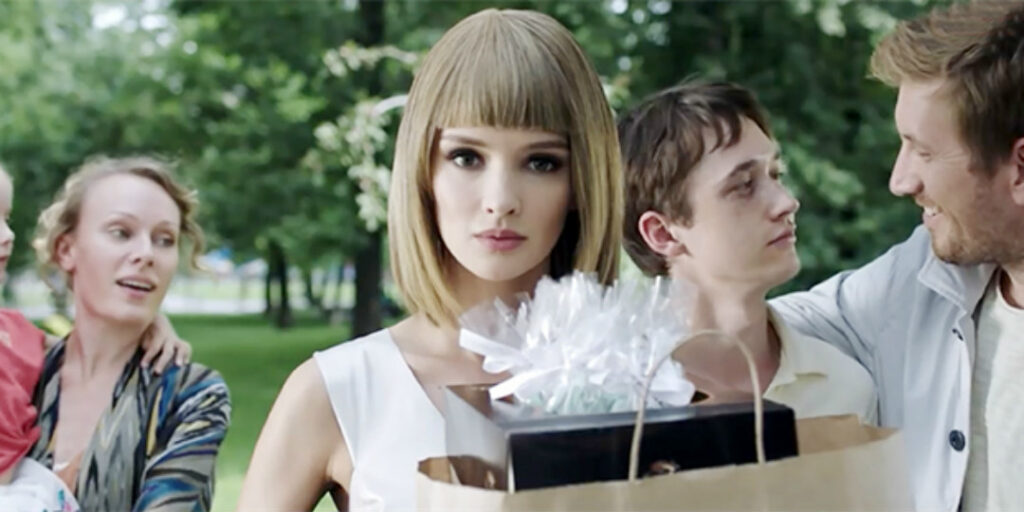
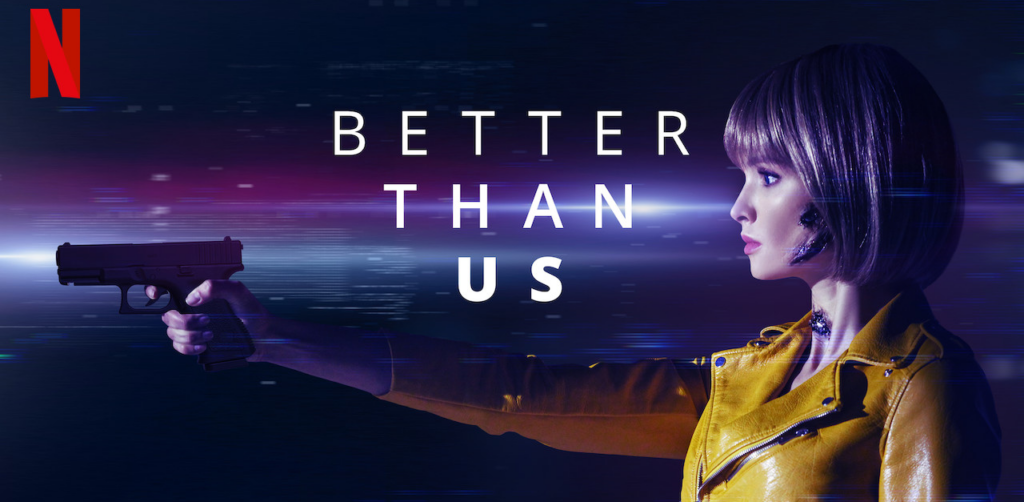
More recently, the comedy series “Project Anna Nikolayevna” (2020) features yet another blonde humanoid who is being tested by serving in the local police in Russia, as an experiment to eventually replace lower-ranking police officers. It is explicitly said that androids cannot replace those in higher command. She is also supposed to follow all of Asimov’s laws, as well as a fourth rule: Robots do not get involved in politics. As seen below, the posters for this series present Anna Nikolayevna as a hypersexualized object fulfilling some stereotypes about women, with elements of nudity, a pink car and the sign “Made in Russia”.
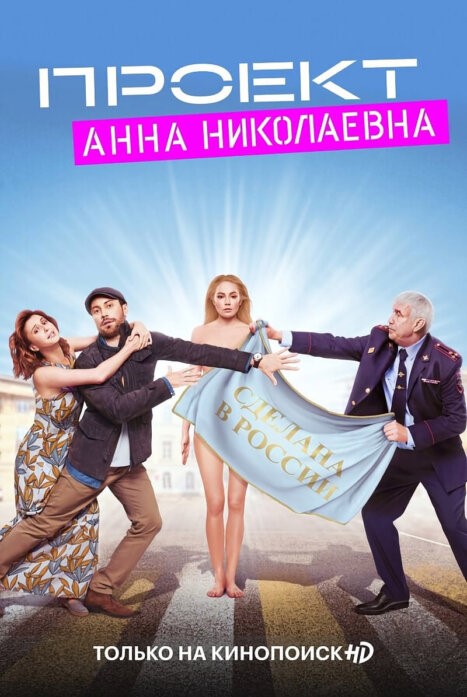
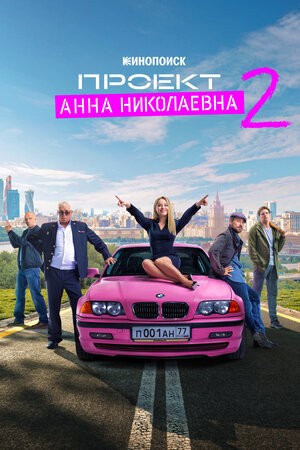
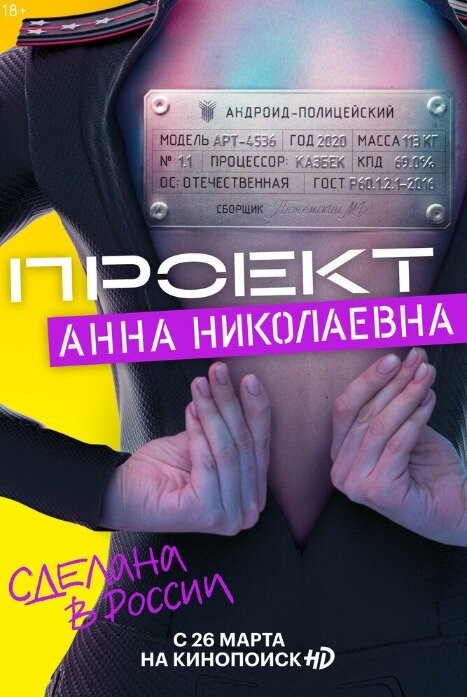
Modern Russia
Many of the AI depictions in post-Soviet Russia are associated with the wider availability of Western movies, including the “Terminator” and “Robocop”. But as Russian society has become digitalized, Russian-made popular culture features some of the similar questions about the human-machine relationship as other societies.
Can, for example, a human love a robot? This is the theme in the movie “(Un)Perfect Man” (2020), where the main character falls in love with an android man. It is also explored by the pop band t.A.T.u. in their song Robot (2001), which touches upon attraction between a human and a robot, treating it as a somewhat forbidden love that nobody else understands.

The robot metaphor is also explored in songs about relationships. In a video clip from 2001, the popular singer Kristina Orbakaite asks a robot to become human again, suggesting that men often become cold-hearted at some point after a few years of marriage or relationship. This is a remake of her mother’s Alla Pugacheva song back from 1965.
Finally, the rock band Leningrad has a song called “Terminator” (2013) in which a man who is left by a woman decides that bones and skulls will become his new emblem and swears not to love again.
Conclusions
As this overview demonstrated, Soviet and Russian popular culture depicts similar views of AI and the human-machine relationship as in the West. Common narratives and types of perceptions (as in Cave, Coughlan and Dihal 2019) include ease (robots doing homework or helping with work tasks), gratification (friendship or romantic relationships with robots), and uprising (robots trying to turn against their creators). There are also examples of anthropomorphic AI, dystopian AI, hypersexualized AI, and romantic AI.
However, the narrative of the rise of the machines, except for art glorifying the communist revolution, does not seem as strong in Soviet and Russian popular culture as it does in some Western states. The fact that Soviet cinema features somewhat awkward-behaving and strange depictions of robots is perhaps a message that these creatures would never be able to be fully human, no matter how hard they try. Modern Russian cinema also bypasses a scenario where robots revolt or launch a war against humans. Machines that decide to or are programmed to not follow Asimov’s laws never really succeed.
These narratives could have an influence on how Russian society interprets the increasing presence AI-based technologies have on their daily lives. The Russian government is keen on integrating more AI-based systems in areas such as health, transport, public services and education. Judging by some public opinion polls, the Russian attitude towards AI can be described as being between positive and neutral.
In a recent survey, 48% of respondents said they trust AI, with 42% saying that they do not and 10% not knowing what to answer. However, the same survey shows that only 32% of respondents could explain what AI is, with 49% answering they have heard about it but could not define it. Meanwhile, another survey from December 2021 carried out by the Higher School of Economics suggests a shift towards a more distrustful attitude towards the Internet, digitalized public services, and AI being involved in bureaucratic decision-making.
At the same time, when asked about the prospects of robotization in various surveys, most Russians said they are not afraid that a robot could replace them in their work duties in the foreseeable future, suggesting that they are not worried about the economic challenges brought by further automation (see VTsIOM 2021, FOM 2021, VTsIOM 2019, VTsIOM 2017). Thus, the uprising narrative, although not absent in popular culture, does not seem to resonate among the Russian public as much.
Interactions with robots and androids will continue to be explored in various forms of popular culture as Russian society becomes more digitalized and accustomed with AI-based technologies, especially with the trends accelerated by the Covid-19 pandemic.

